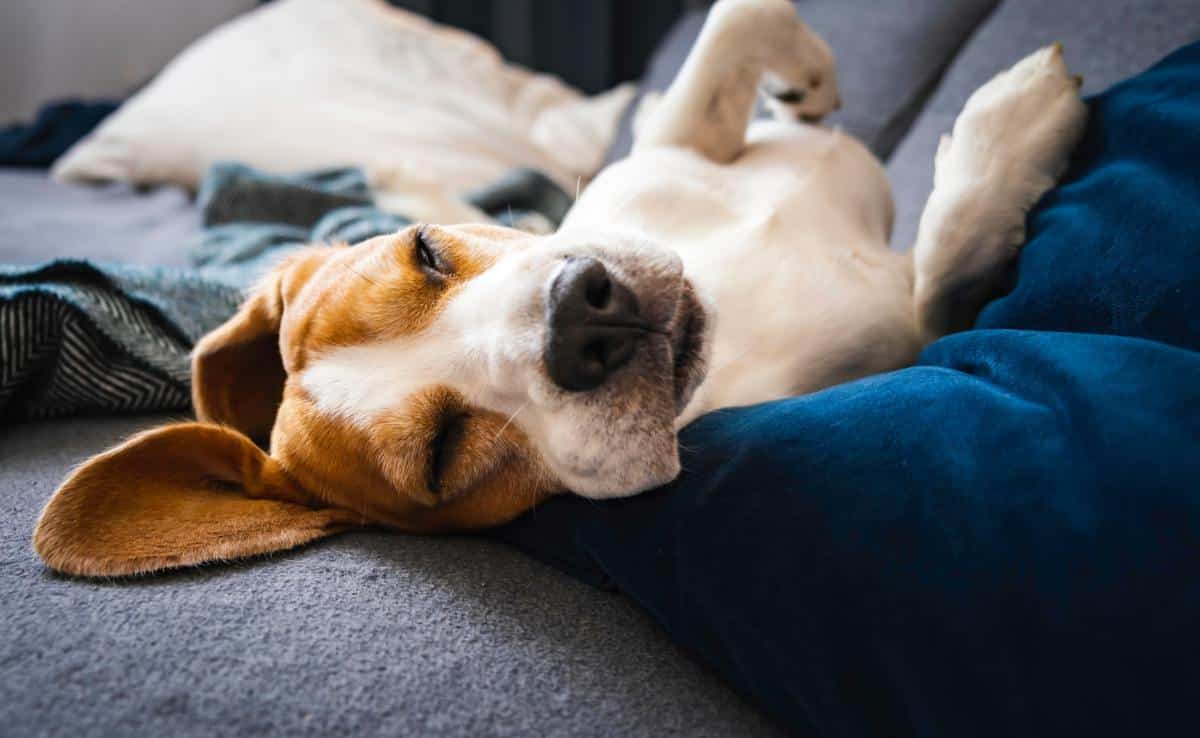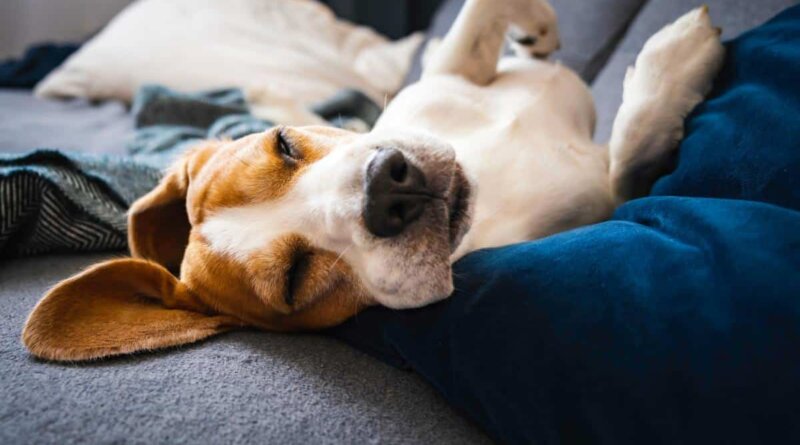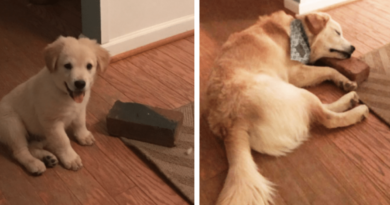Why Do Dogs Sleep On Their Backs? It Means More Than You Might Think
To keep the lights on, we receive affiliate commissions via some of our links. Our review process.

Of all the goofy positions you can find your dog in, one of the most hilarious contortions is when they’re asleep on their back with their legs splayed wide open or pointed in the air. It doesn’t look all that comfortable from a human perspective, but it must be for our furry friends, right? If you’ve ever wondered why dogs sleep on their backs and what it means, we’ve uncovered all the reasons.
Why Does My Dog Sleep On His Back?
Our canine companions have so many different sleeping positions, but there’s a reason behind each one other than merely a personal pup preference. Each position can give you some insight into your dog’s health, mood, and evolutionary behavior. If your pup frequently goes belly up while snoozing, here’s what it can tell you about your furball.
A Way To Cool Down
A dog sleeping on his back can mean that he’s simply trying to cool off. The most efficient way our canines regulate their body temperature is through panting. But obviously, they don’t pant when they’re asleep. So when dogs feel hot but are trying to get some shut-eye, going belly and leg up is the best way they can snooze comfortably. Why? It’s all about biology.
With most dogs, their fur is thinner on their bellies, so back-sleeping is a more efficient way to get airflow to their bodies. But their feet come into play as well. Dogs have sweat glands (called merocrine glands) in their paw pads (and noses). These glands don’t produce much sweat, but in the absence of panting, they can help a dog cool down a bit. So having their paws up in the air when catching some Z’s can help with thermoregulation.
Puppies overheat faster than adult dogs, so that may explain why you often find your puppy sleeping on his back. The same goes for older and overweight dogs. Brachycephalic (flat-faced) breeds like Pugs and French Bulldogs also tend to overheat more quickly, but they may not sleep on their backs as much due to breathing problems associated with these breeds.
It Relaxes Their Joints
Back-sleeping, especially with the legs spread out, is also a way for them to relieve excess pressure and relax aching muscles and joints. Senior dogs who suffer from arthritis or joint problems or those recovering from surgery or an injury may choose this sleeping position for the most comfort. If your dog has joint pain, you may want to consider an orthopedic dog bed, which can help relieve achiness.
A Sign Of Security
In the wild, dogs typically don’t sleep belly-up because it makes their bodies, specifically their internal organs, more vulnerable. It’s also a position that’s harder to jump up from and defend themselves when there’s a perceived threat. So instead, they curl up to protect themselves. So what does it mean when your furry friend sleeps on his back? It’s a sign that your dog feels safe, secure, and completely relaxed in your home.
Fun Facts: The most common dog sleeping position is the “side sleeper,” when they’re lying on their sides with their legs extended. Adult dogs sleep an average of 11 hours each day. Nearly half of all dogs sleep in bed with their owners.
Why Do Dogs Lay On Their Back?
Dogs roll over and lie on their backs for several reasons, which we highlight below. But if you’re trying to figure out if your pup wants a belly rub, pay attention to his other body language. If your dog’s legs and tail are relaxed, that’s a good sign. If his tail is between his legs, it’s probably best to avoid it. Some dogs simply don’t care for belly rubs.
- To scratch an itch
- As a sign of happiness and fun when playing with people
- Wanting a belly rub
- As a sign of submission to say, “I’m not a threat”
- As a combat tactic during play with other dogs to deliver or avoid bites to the neck, according to a 2015 study
Why Do Dogs Sleep In Other Positions? (Video)
Check out this brief video to learn what several other dog sleeping positions reveal about your pup.
What Else Can Your Dog’s Body Language & Behavior Reveal?
Our canine companions give us cues about how they’re feeling all the time. While many can be easy to decipher, some can be a mystery. If you’re not sure what your dog’s trying to tell you, check out our guide on head-to-tail dog body language. Understanding your pup’s means of communicating and what it means can help you build a stronger bond with your dog.




